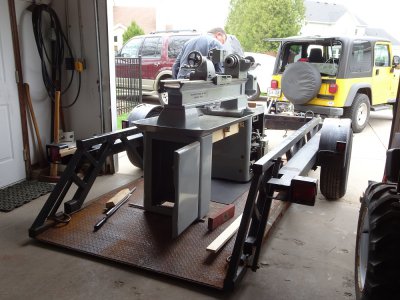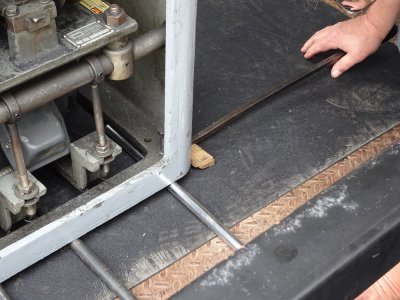- Joined
- Jan 5, 2023
- Messages
- 14
The world of woodworking isn't much different. Especially when routing. About 90% of the time goes into set-up and fixturing, the remaining 10% goes into actually making a cut. Thanks for the comment regarding Z-axis clearance. The PM-833TV has about 17" of Z-travel and 20" of overall clearance. If you think that might end up getting too tight too often, please let me know.I traded for a used Jet knee mill quite a few years ago. Been happy with it. What I've found about limitations etc. : 3 hp I've never needed that much but don't really hog a lot. Far more time is spent optimizing setups and tooling changes than removing metal. Tooling and accessories will end up costing at least as much as the mill. Seems there is always something I'd like to have to make it easier. Any sort of variable speeding system is better than changing belt positions. Work envelope: I am far more likely to run out of Z-axis than anything else. Not in the size of the work but in the space used for work holding, boring head etc. A 3 axis DRO is so much easier to use than the dials. On a knee mill having a power feed on the knee has been worth it to me. I don't know about raising the head on a bench top.
Basic items you will want: decent vice, accurate drill chuck, caliper, micrometers just two to get started, boring head & bars, 115 pc. set of good drills, (I also really like my screw machine drills) a set of assorted HSS end mills, good edge finder, deburring tool, good files, set of HSS taps, a tap follower, set of parallels, chip & flux brushes, set of strap clamps, set of collets. Safety glasses always used! Way oil, cutting fluid/oil, gallon of WD-40 or =. Metal to machine. A metal lathe. A tooling cabinet. Note book. Charts for drill sizing, tapping, metric conversion. And you haven't even started down the rabbit hole.... Above all be safe, have fun.
I've already decided that any benchmill I buy will at least have Z-axis power simply because the head is so heavy. An X-axis motor might get added later on just to stabilize feed rates for the longer cuts and face milling. I would LOVE to have 3-axis DRO, but it's an $1100 option with PM. Rumor has it, that with a little elbow grease, a self-installed system can be had for about half that.
Thank you also for the detailed list of "accessories". Believe it or not, I already have a decent portion of this list due to the fact that I've been stumbling along for over 10 years using a lot metalwork tooling in my woodworking machines. I already have end mills, deburring tools, files, taps, cutting fluids, calipers, conversion charts, a metal cutting bandsaw, and several cobalt and carbide drill bit sets -- including machine length. What I will need to buy is a decent vise, a keyless drill chuck, an edge finder, and a quality set of collets. I might even have to invest in a set of parallels and precision blocks (???) Don't know, never used them before. Safety glasses are always the first thing to go on when entering my shop.



